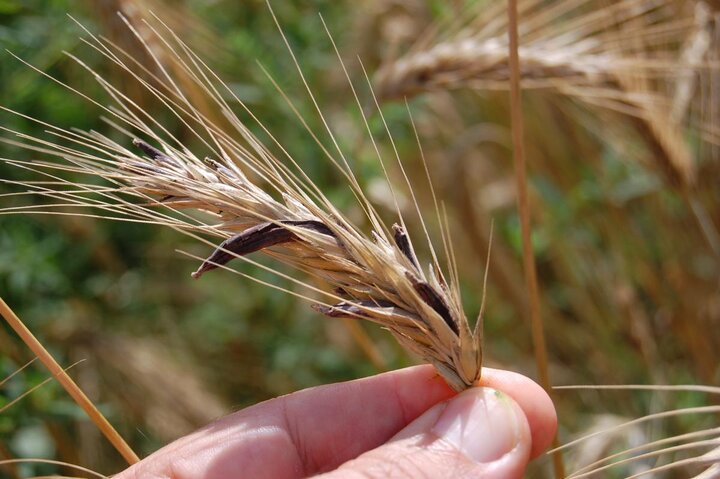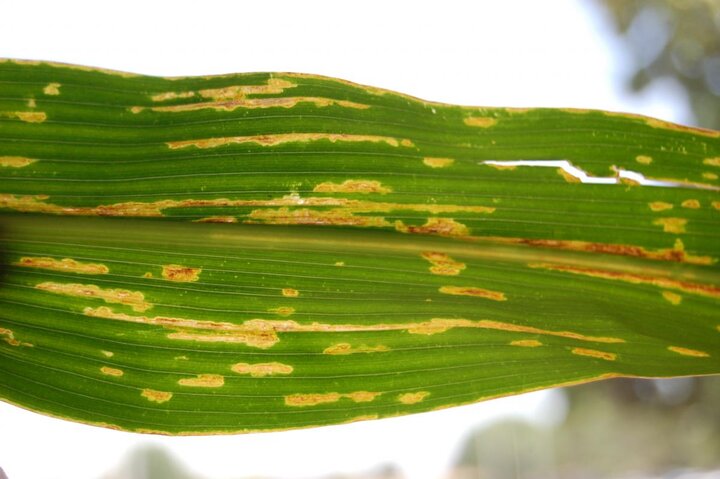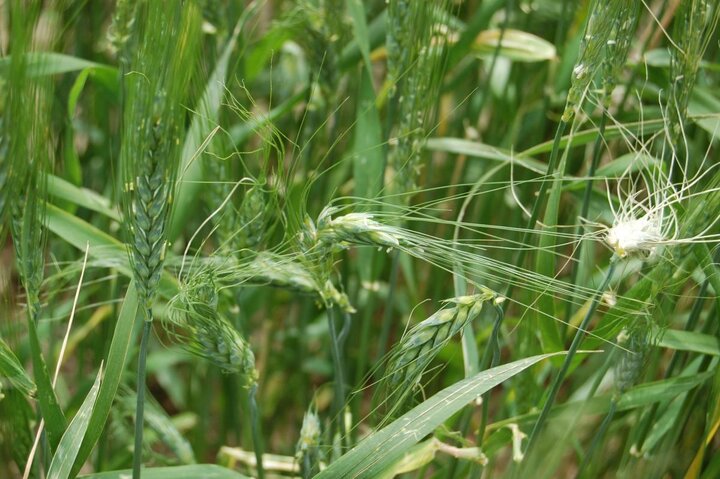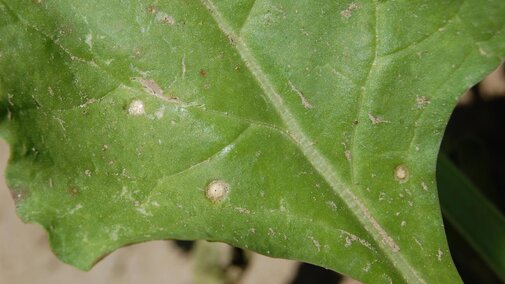Introduction
The incidence and distribution of crop diseases in western Nebraska have long been known to be influenced based on environmental conditions experienced during that particular year. This phenomenon is seen virtually every year. During 2019, we received abundant rainfall in spring and the early summer, which was very similar to the last 4 years (2015-2018). This provided good levels of soil moisture throughout the Panhandle, resulting in overall good crop development and emergence. Similar to the conditions in 2018, we experienced lower ambient temperatures than in the past throughout the early summer with the exception of a short period in late July-early August with more typical summer high temperatures (high 90s, but few days exceeding 100 F).
Unusual Weather Conditions
The year 2019 will long be remembered as an extremely challenging year for agricultural production in western Nebraska. In mid-July, it became very dry and unfortunately this also corresponded with a disastrous breach in the Fort Laramie irrigation canal in Wyoming on July 17, which supplies irrigation water for about a third of Nebraska irrigated agriculture. No water was available for thousands of acres in Nebraska until August 28, after the canal had been fixed. This strongly affected production for those in the Gering Valley south of the North Platte River. Because this event occurred at a time when many crops were flowering, particularly dry beans, yields from those areas were sub-par if not totally abandoned.
Another notable weather event affecting production was a series of severe hailstorms in mid-August, which is extremely rare. Hail events are normally in June-July. Three devastating storms occurred within a 4-day period, two of which occurred less than 12 hours apart (Figure 1). The damage from these storms was centered in the Platte Valley extending from Morrill to Bridgeport.
Bacterial diseases were particularly problematic to those field of sunflowers, corn and beans that were not completely destroyed by the hail. This report will summarize some of the major and/or unusual disease occurrences encountered during 2019 for sugar beets, dry beans and other relatively new pulse crops, sunflowers, and other minor specialty crops, as well as some reports from wheat and corn.

Sugar Beets
Root rot diseases of sugar beets in general were about average in 2019, due to scattered, localized water availability. Rhizoctonia was seen first in late June in some areas (Figure 2).
However, we continued to evaluate the integration of multiple methods for optimal management of Rhizoctonia root and crown rot, as it is the most important and consistently damaging disease in Nebraska. The dry rot canker disease was again documented from several fields near Bridgeport in the older growing areas of the valley. This is a root rot disease that is very unique in being caused by a distinct species of Rhizoctonia, referred to as binucleate.
It is likely that Cercospora leaf spot would have been particularly problematic due to the very wet, conditions with high night temperatures in July. In fact, we found young lesions on lower leaves (Figure 3), providing evidence of infection within research plots at the Panhandle REC very early – July 15.
This is very rare. The hailstorm removed most of the foliage in August, so Cercospora was not a problem after this point. However, yield reductions were seen as a result of the storms. The plants were not killed, but were producing new leaves in September when they should have been concentrating on developing sucrose into the roots.
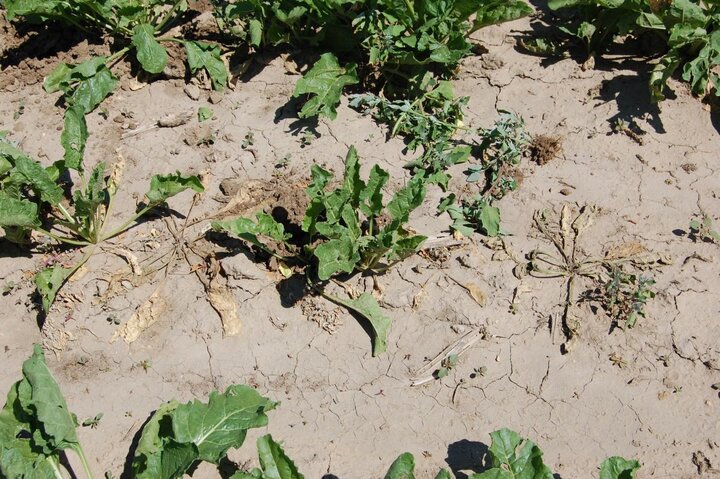
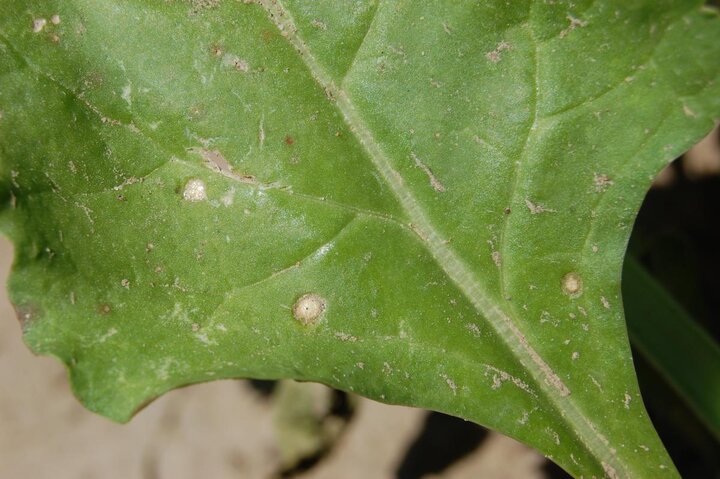
Dry Beans
Those fields not affected by the irrigation canal breach or the hailstorms were approximately the same as in former years. Bacterial diseases (common blight and brown spot) and white mold were found intermittently from localized and isolated areas, due to adequate moisture and lower temperatures or most of the summer. Damage from the storms was then more seriously observed on those fields escaping drought and hail.
New Pulse Crops
Interest in new pulse crops have been increasing and we continue to monitor grower fields for disease incidence due to the novelty of the crops and their unknown potential disease problems. We have additionally conducted research projects on the station to closely observe diseases and the investigations of various available chemical products for disease management.
Over past few years, interest in yellow dry peas have increased rapidly to an estimated 75,000 to 80,000 acres planted in 2019. We have observed several root diseases due to Rhizoctonia and Fusarium, but projects establishing their distinct identities are still in progress. Like dry beans, a complex of bacterial diseases (common blight, brown spot, wilt) appears to be the most likely factor that will limit production, based on recent disease surveys.
Cowpea is another new crop that shows promise for producers in Nebraska. We are still learning how to grow it, but to date we have identified several bacterial diseases that also appear to be the same (wilt, common blight) ones that affect dry beans. However, this also is a question that we are now addressing with greenhouse testing. Root diseases (Figure 4) are also seen sporadically in low incidences within fields, but are not of any concern at this time.
However, they are being characterized and tested for pathogenicity and virulence against dry beans, which will likely be a major rotational crop throughout the state. It is also interesting to note that in the last two years, we have found both white mold and Phomopsis stem canker in our cowpea research plots. When published, both will be new reports for these diseases in North America, but the actual impact on economic production is unknown at present.
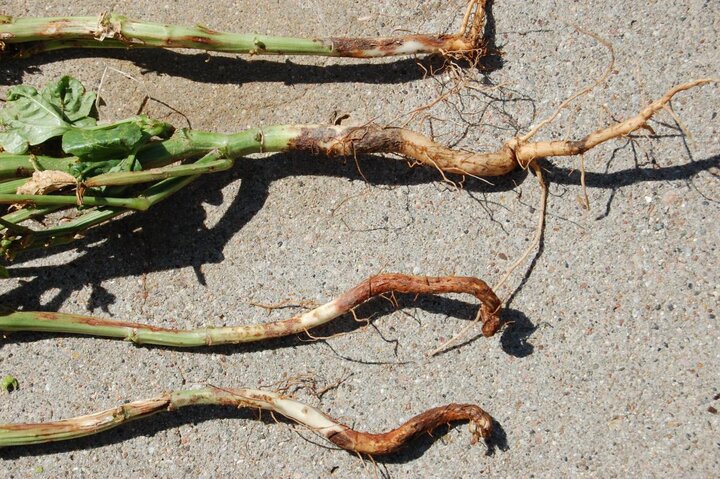
Chickpeas
Interest in chickpea production in Nebraska continues, so we will still to conduct industry field trials for new and more efficient fungicides for managing Ascochyta blight. This is a serious and widespread fungal disease which is our major yield-limiting factor. We also continue to collaborate with Carlos Urrea in the development of new disease resistant cultivars adapted for western Nebraska. Several breeding lines and cultivars with high levels of resistance have been released with more expected in the new few years. 2019 was a particularly bad year for A. blight, and high levels of the disease were seen wherever the crop was grown due to the cool, wet conditions (Figure 5).
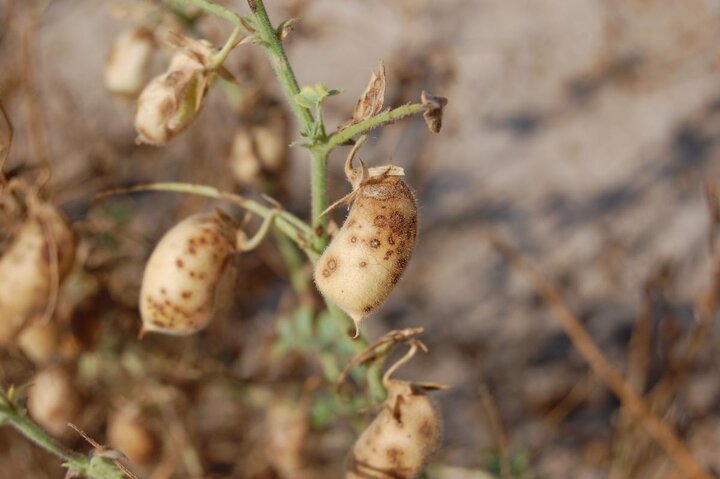
Sunflowers
Sunflowers in the valley were severely damaged by the multiple hailstorms.
Several fields were completely stripped of leaves (Figure 6), resulting in early senescence and death of plants. Our field plots yielded practically nothing as the seed never filled properly due to the storms occurring right after blooming began. It is also notable to mention that very little disease was observed from those fields that did not suffer from the storms. We assisted in the conduction of another survey in cooperation of the National Sunflower Association and discovered that 5 randomly selected fields from Kimball, Banner, and Box Butte Counties were relatively free of any disease. This is extremely rare based on past surveys and I have no explanation for this.
I also went back to the same field in Kimball County from which the Orobanche (broom rape) infestations were documented 5 years ago. Broom rape is a parasitic plant that infects roots, and it was found occurring on sunflowers within a commercial, production crop back in 2014. This field has not had sunflowers grown since that time but is in a wheat-fallow rotational system. It appeared that the wheat crop was grown in 2018 and fallowed in 2019, but some of the wheat had been left unharvested in the field in patches with wild sunflowers. Within those patches the Orobanche plants were readily found wherever wild sunflowers had grown (Figure 7). This a very interesting project that will continue to be investigated in the future.
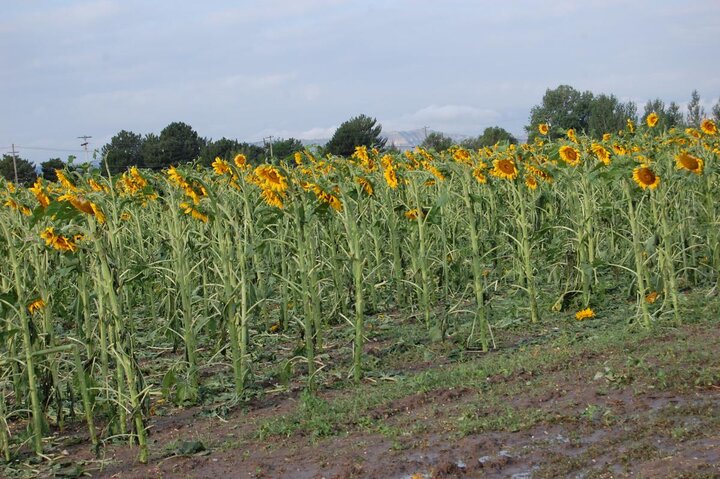
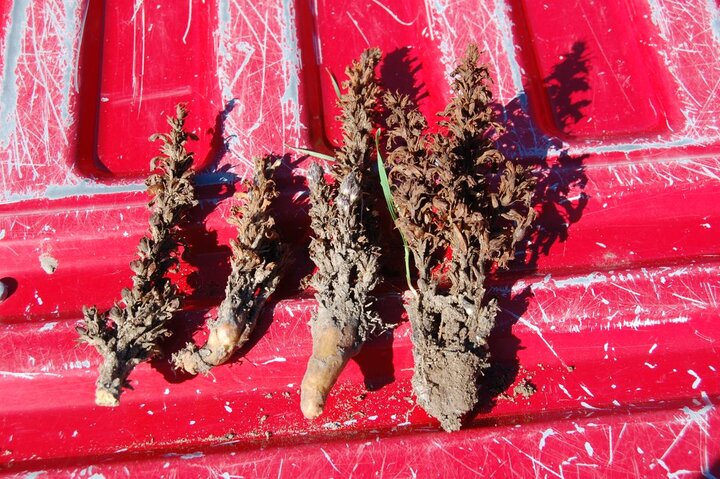
Mint
Another new potentially profitable crop for western Nebraska is mint, grown for the oil. Both spearmint and peppermint varieties/breeding lines are currently being evaluated by Dipak Santra, the alternative crops breeder, at the Panhandle REC in small research plots. A rust disease was observed again this year as it was in 2018, likely due to the cool and moist environment (Figure 8).
Curiously, it was again seen only on specific spearmint entries, but not throughout the entire study. We will continue to monitor the plots of this perennial crop for studying the pathogen’s life cycle and spore stages this winter and into next spring. This is a new finding since the idea for growing the crop in this region is also in the experimental stages.
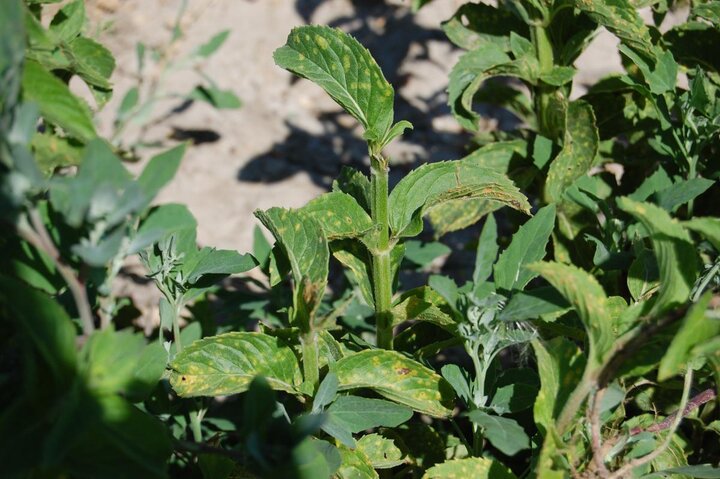
Additional Reports
Although this article is aimed at diseases encountered on the specialty crops, I also found several novel diseases appearances on other crops grown in western Nebraska that merit report. In some research plots on the station ergot was readily found infecting rye plantings (Figure 9). It is significant to note that the wheat was untouched although it was adjacent to the rye plots. This illustrated a strong environmental relationship with the highly susceptible rye, the presence of the pathogen, and the cool wet weather experienced in June.
We also experienced high levels of the new disease of corn, bacterial leaf streak (Figure 10). It was my first experience with the disease in the Panhandle although it has been found at low levels in this region and 74 of our 93 Nebraska counties. During that period in mid-summer with high temperatures, I also found several fields in the Bridgeport and Bayard areas that were affected by bacterial stalk rot (Figure 11). It occurred in random patches throughout fields but was not economically damaging to the crops.
Lastly, from several fields in Kimball County, we observed some freeze damage to wheat due to several cold spells in June (Figure 12). It was only noted on a specific early-season cultivar. No damage was observed on the other cultivar from the same field as it was not heading and pollinating until after that period of sub-freezing weather.
